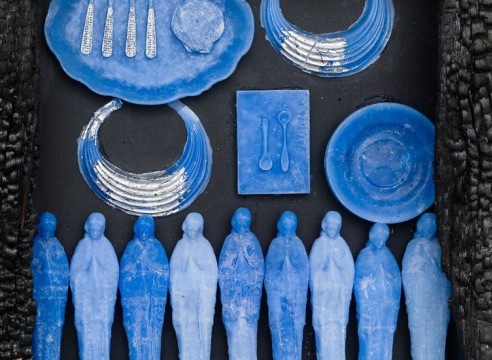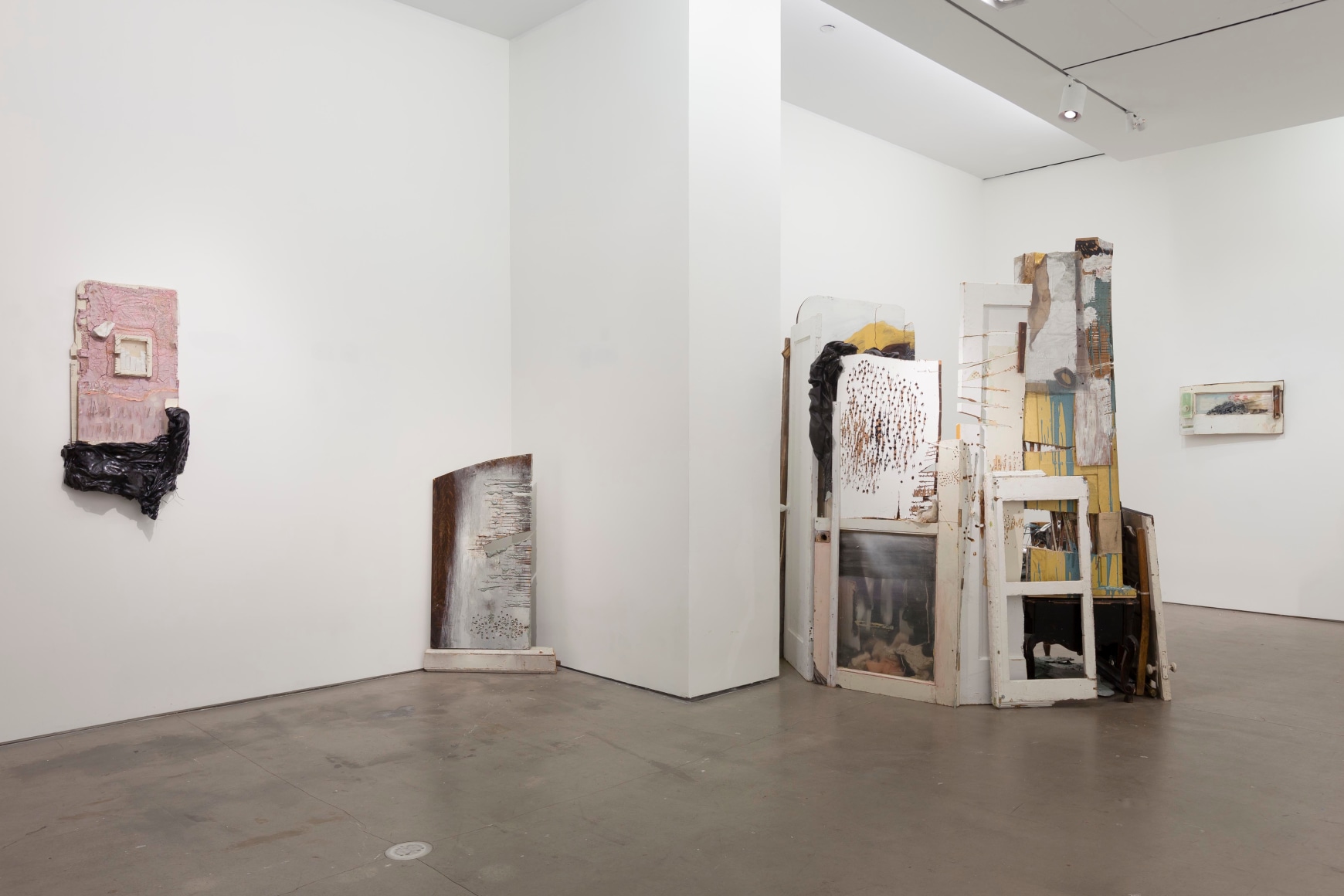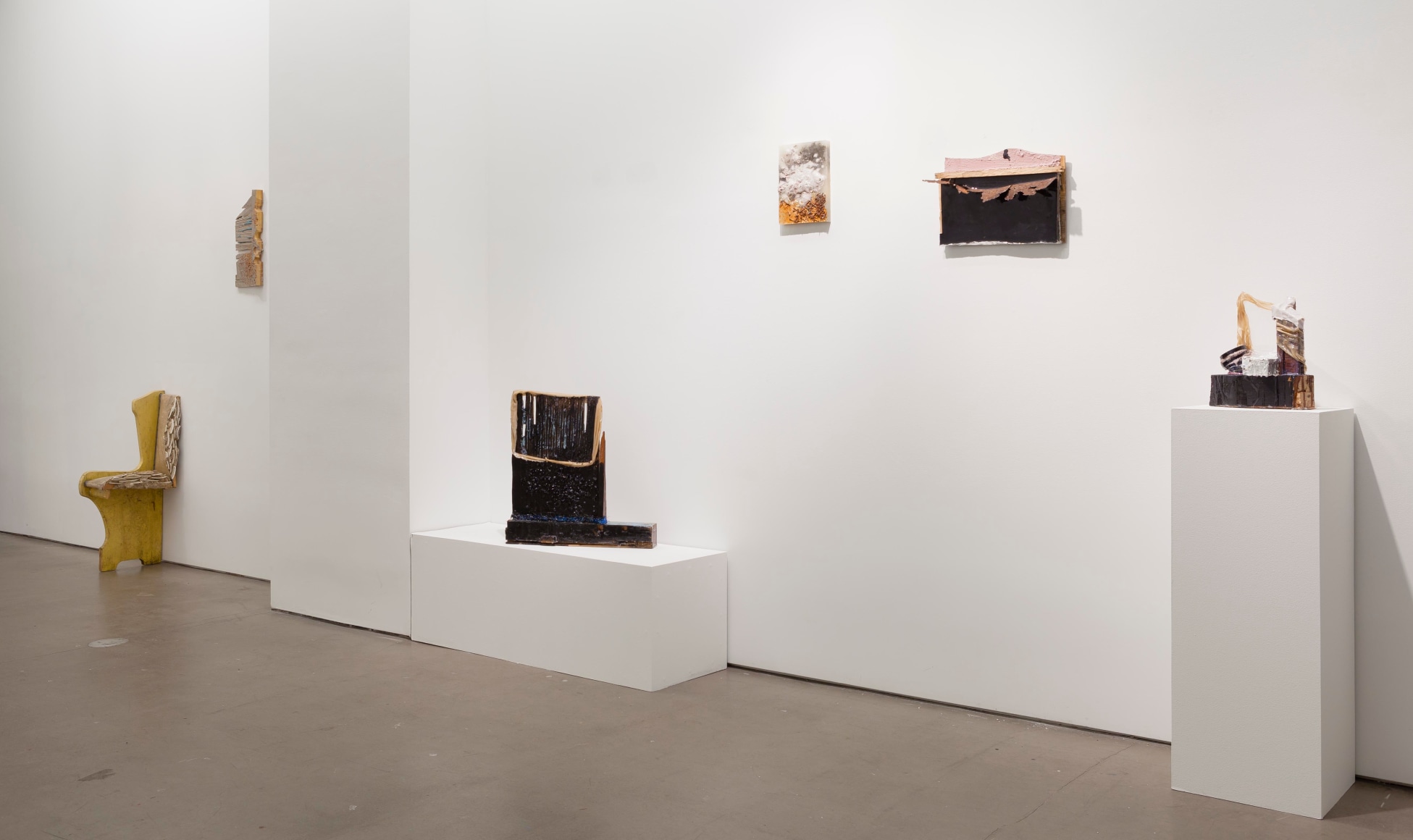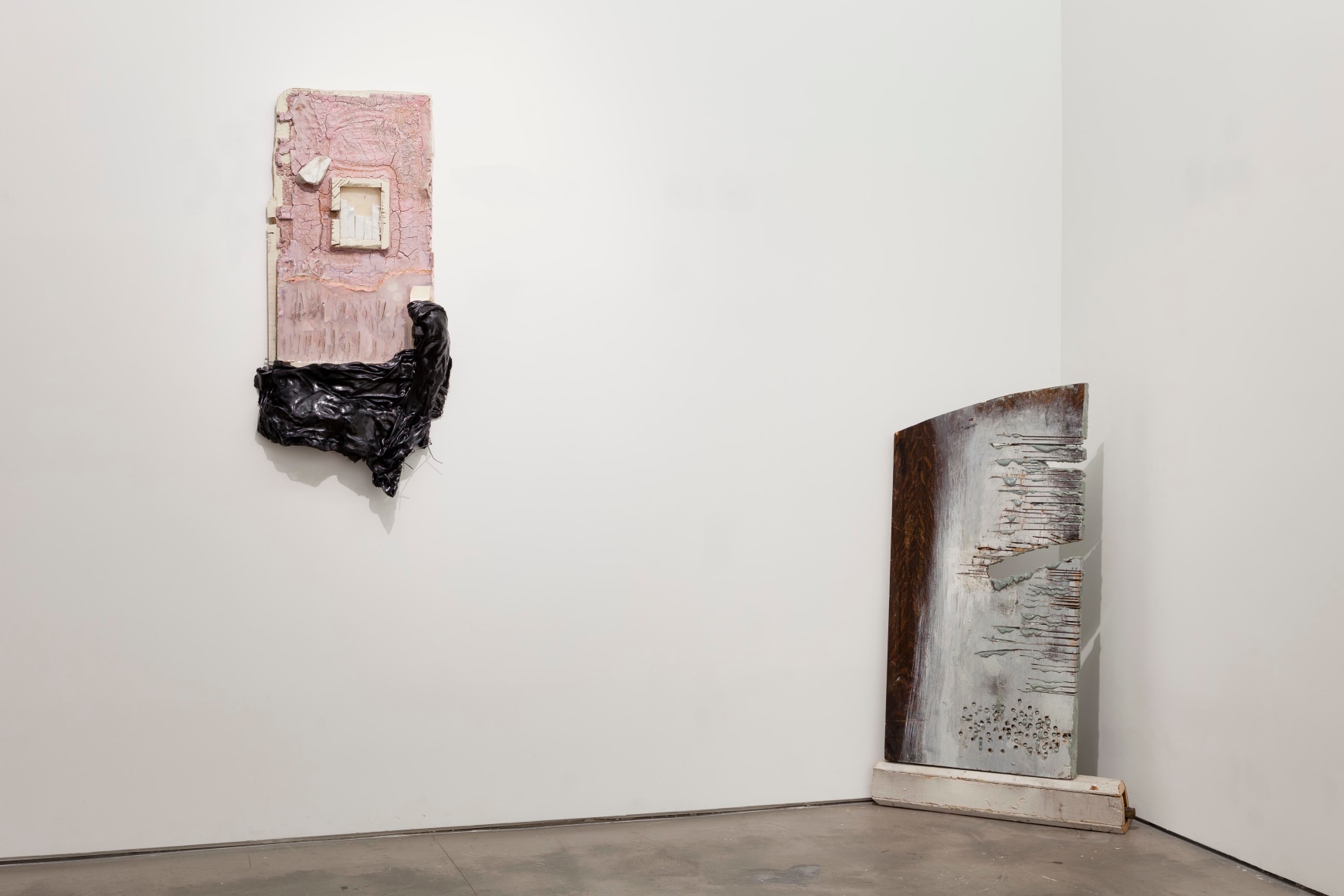
Asya Geisberg Gallery is pleased to present Julie Schenkelberg’s “Hearsay”, an exhibition of sculpture and installation. “Hearsay” continues the artist’s material investigations into the home’s symbolism, the city’s tall tales, and buried personal histories. Schenkelberg indulges in the paradoxical plenty of disuse and decrepitude. As with her first exhibition “Bad Blood”, she takes inspiration from the Rust Belt’s legacy of abandonment, conjuring houses in disrepair, defunct industries, and found shabby furniture imbued with years of memories, equally decaying and still alive. Schenkelberg invents new ways of disassembling and recombining the lived-in furniture with disembodied parts. Teal, yellow, and washed-out pink suggest the Art Deco palette that covered Cleveland in its prime, while shards of white marble echo the trickle-down luxury of middle-class bathrooms from that era. Via material re-assemblage, the artist retells her stories and those of the objects in her midst.
While the claustrophobic “Bad Blood” took over the gallery space, “Hearsay” shows a shift in Schenkelberg’s practice towards a stripped down and concentrated density. Her current work traps tension, as entropic elements are pulled together in a small entity. Half-buried shards jut out, and mummified objects struggle. Schenkelberg combines broken-down markers of home - doors and windows, chair legs and dresser tops, and their undercarriage– nails, wire, plaster – constantly asking the viewer to shift scale. Within the recontextualized debris, the work exhibits a macabre aesthetic of hardened sediment seeping through the cracks, drilled holes, and repetitive gashes. Intentionally dirty and primitive, raw and complex, layers of rot are scraped away to reveal the original unsullied surface. Soft and feminine material such as silk is hardened, preserved in resin, effectively trapped and prevented from movement. Broken cups and dishes, familiar tropes of the artist’s work, hint at a dysfunctional dainty aesthetic, while cement and plaster connote heft and strength.
In the gallery’s central installation, a Miss Havisham mansion transforms into piles of wood or a shanty of rusty metal. Marble chunks appear as rubble around black stair spindles rising out of the pile, tied with draping black strips of silk. Furniture is severed, splintered, and recombined almost beyond recognition. The conflict of prescribed gender roles expresses itself in material juxtapositions and fraught relationships of rusty nails and flimsy cloth trying to contain ungainly parts in vain. Schenkelberg’s oeuvre reinterprets domesticity as a contemporary position, while plunging into the meaning of decay, towards a reinvention of common material’s everlasting fascination and depth.




